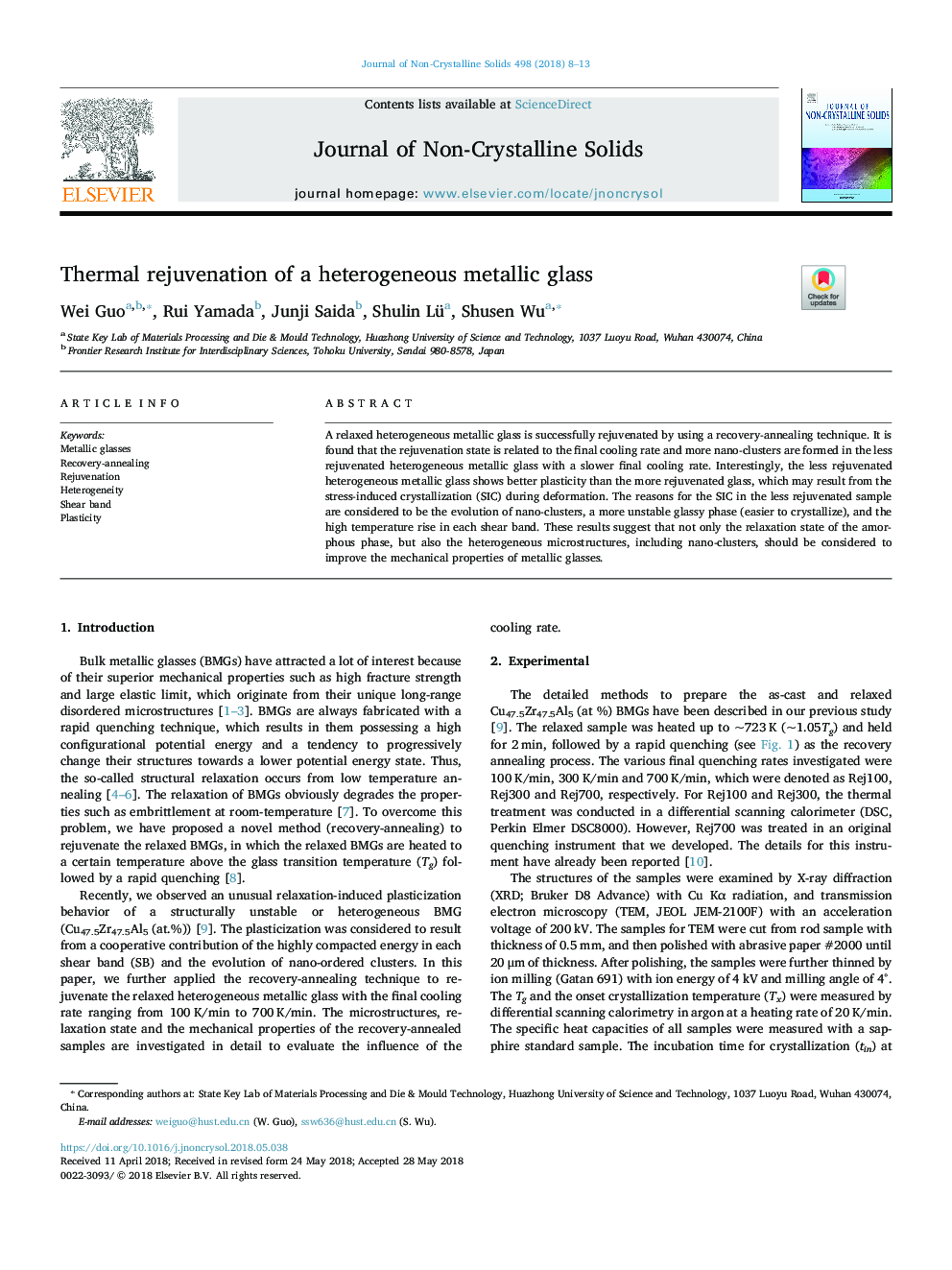| Article ID | Journal | Published Year | Pages | File Type |
|---|---|---|---|---|
| 7899557 | Journal of Non-Crystalline Solids | 2018 | 6 Pages |
Abstract
A relaxed heterogeneous metallic glass is successfully rejuvenated by using a recovery-annealing technique. It is found that the rejuvenation state is related to the final cooling rate and more nano-clusters are formed in the less rejuvenated heterogeneous metallic glass with a slower final cooling rate. Interestingly, the less rejuvenated heterogeneous metallic glass shows better plasticity than the more rejuvenated glass, which may result from the stress-induced crystallization (SIC) during deformation. The reasons for the SIC in the less rejuvenated sample are considered to be the evolution of nano-clusters, a more unstable glassy phase (easier to crystallize), and the high temperature rise in each shear band. These results suggest that not only the relaxation state of the amorphous phase, but also the heterogeneous microstructures, including nano-clusters, should be considered to improve the mechanical properties of metallic glasses.
Related Topics
Physical Sciences and Engineering
Materials Science
Ceramics and Composites
Authors
Wei Guo, Rui Yamada, Junji Saida, Shulin Lü, Shusen Wu,
